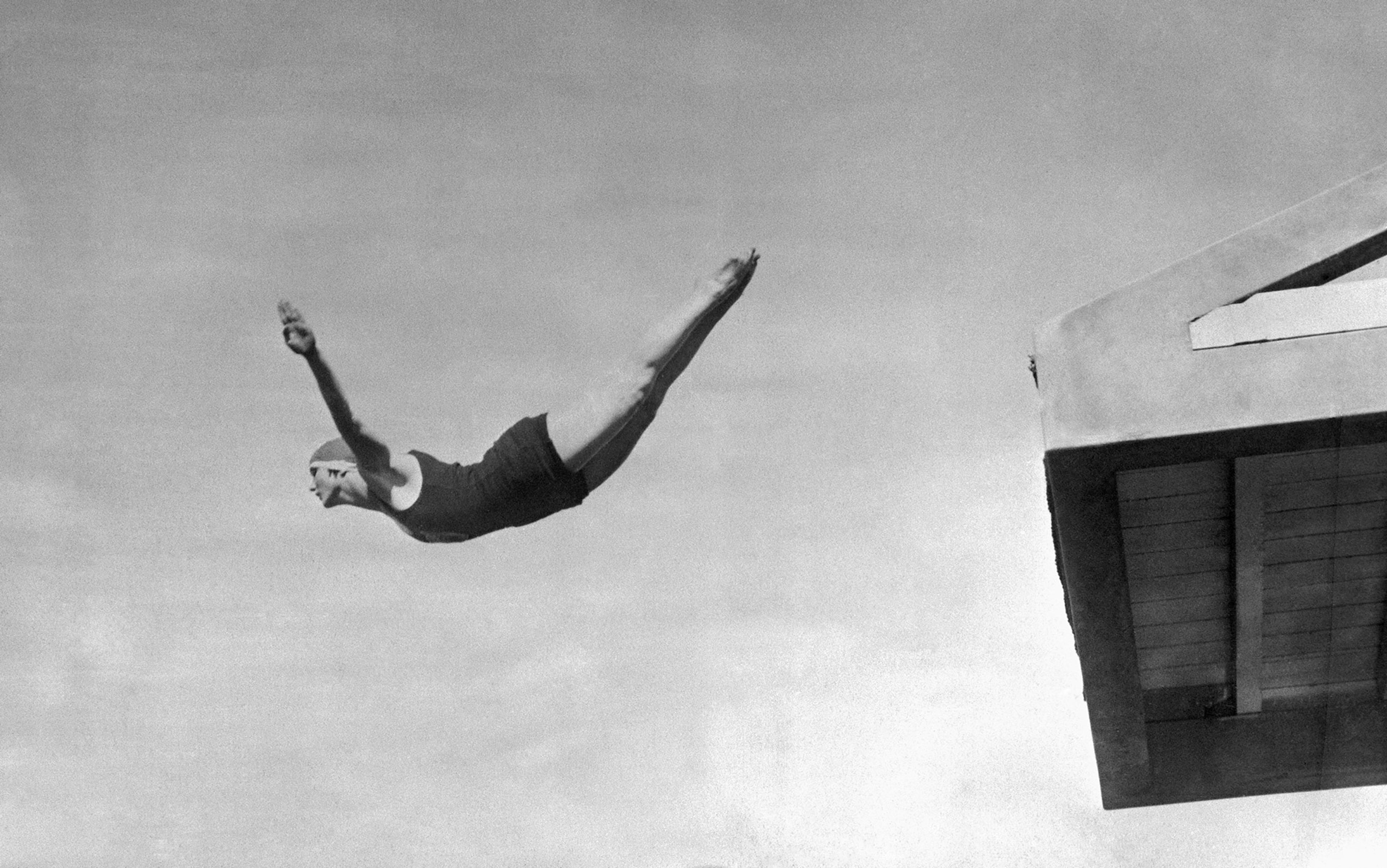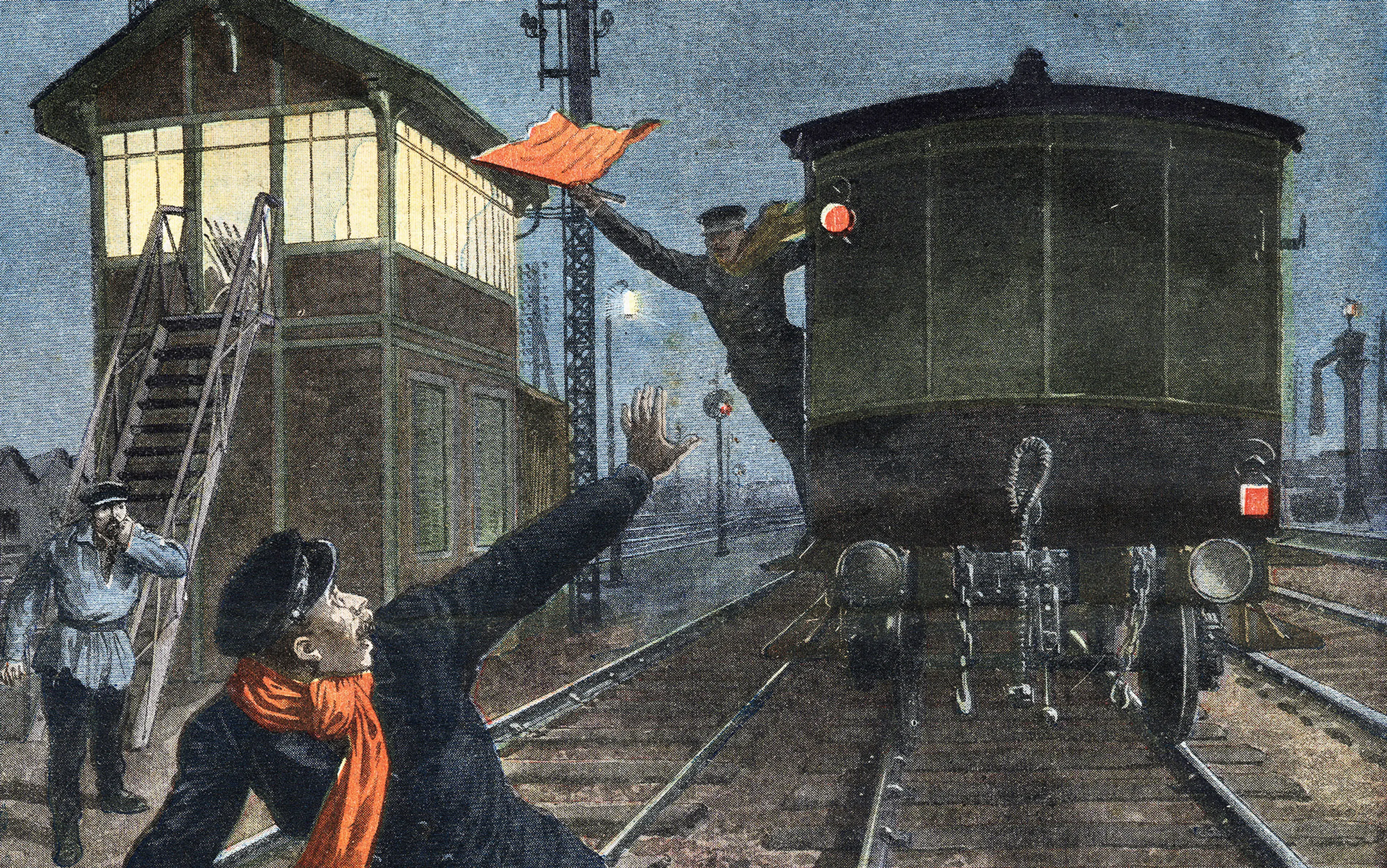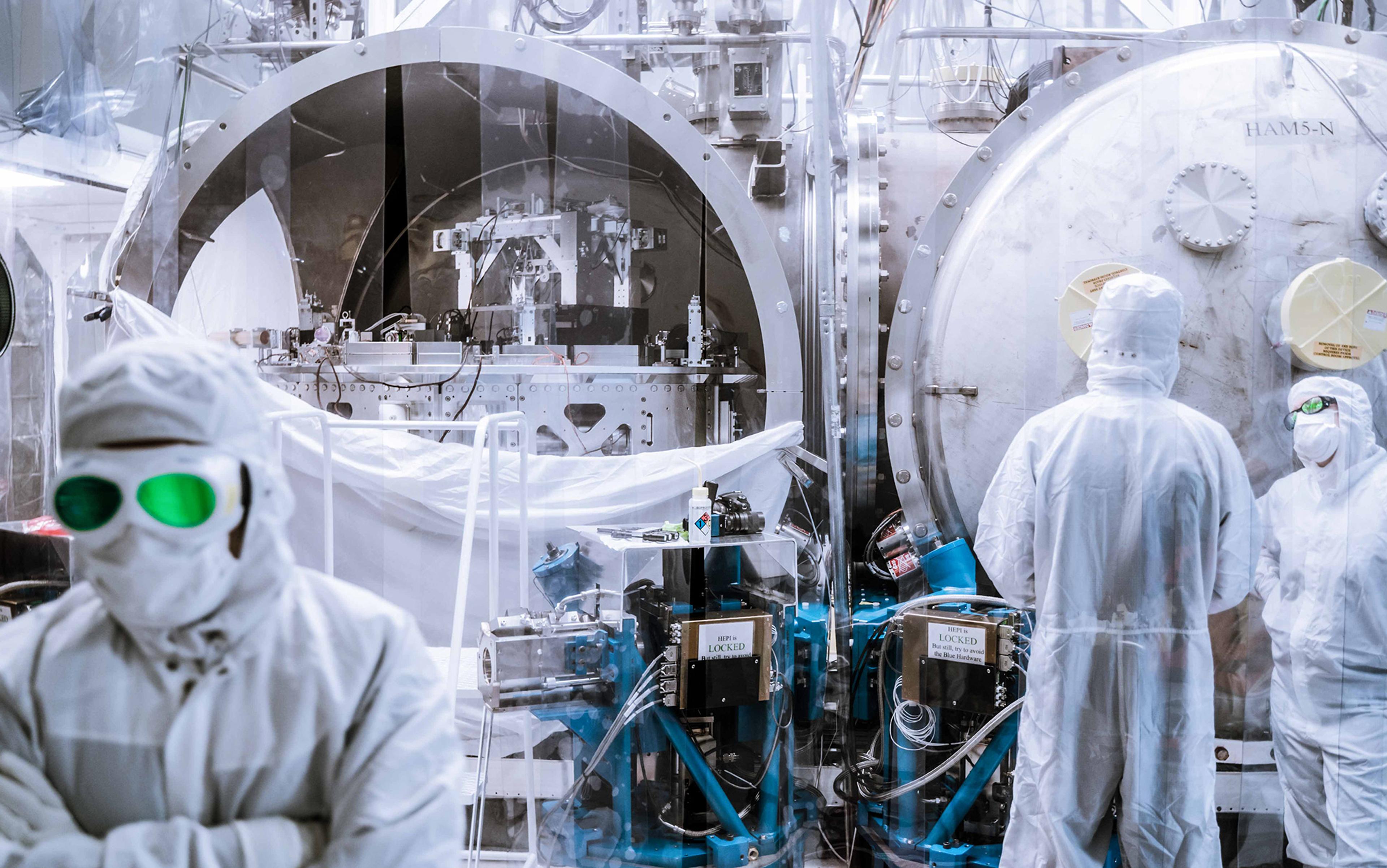In Galileo’s Dialogue Concerning the Two Chief World Systems (1632), three Italian gentlemen – one philosopher and two laymen – debate the structure of the Universe. The philosopher, Salviati, argues in support of the Copernican theory, even though it requires a moving Earth – something that strikes his interlocutors as problematic, if not absurd. After all, we don’t feel the ground moving beneath our feet; clouds and birds are not swept backwards as the planet whooshes through space; a ball dropped from a tower does not land far away from the base of that tower.
But Salviati, standing in for Galileo, asks his companions, Sagredo and Simplicio, to reconsider their intuitions. Suppose one were to drop an object from the mast of a tall ship. Does it make any difference if the ship is moving? No, Salviati insists; it lands at the base of the mast regardless, and therefore one cannot conclude anything at all about the ship’s motion from such an experiment. If the ship can be in motion, then why not the whole planet? Simplicio objects: Salviati has not actually carried out this shipboard experiment, so how can he be sure of the result?
‘Without experiment, I am sure that the effect will happen as I tell you,’ he replies. After some further cajoling, Simplicio is won over.
Today, most scientists and philosophers believe that there is only one reliable way to learn about the world, namely, to poke and prod at it – the view that philosophers call empiricism. When a child does the poking and prodding, the activity is called play. When a scientist does it, it’s called observation and experiment. In either case, though, we learn by seeing and doing.
But as Galileo has shown, there seem to be exceptions to this rule. There are – allegedly – occasions when we come to understand something about the world via a peculiar kind of experiment that takes place only in the mind. Thought experiments, as they’re known, are an exercise of pure imagination. We think about some particular arrangement of things in the world, and then work out what the consequences would be. In doing so, we seem to learn something about the laws of nature.
Thought experiments have played a crucial role in the history of physics. Galileo was the first great master of the thought experiment; Albert Einstein was another. In one of his most celebrated thought experiments, Galileo shows that heavy objects and small objects must fall at the same rate. On another occasion – building on the ship’s mast argument – he deduces the equivalence of reference frames moving at a constant speed with respect to one another (what we now call Galilean relativity), a cornerstone of classical physics.
Einstein, too, was adept at performing such imaginative feats in his head. As a young man, he imagined what it would be like to run alongside a beam of light, and it led him to special relativity. Later, he imagined a falling man, and realised that in freefall one doesn’t feel one’s own weight; from this insight, he concluded that acceleration was indistinguishable from the tug of gravity. This second breakthrough became known as the ‘principle of equivalence’, and led Einstein to his greatest triumph, the general theory of relativity.
What these examples have in common is that knowledge seems to arise from within the mind, rather than from some external source. They require no laboratory, no grant proposal, no actual doing of … anything. When we perform a thought experiment, we learn, it would seem, by pure introspection. ‘Seem’ is perhaps the key word. Whether thought experiments actually do present a challenge to empiricism is hotly contested.
James Robert Brown, a philosopher at the University of Toronto, believes that thought experiments really do represent a kind of epistemic free lunch. They give us insight into the laws of nature, he says, and they do it without the need to get one’s hands dirty, so to speak. Back when he was a student, Brown sympathised at first with the empiricists; they ‘seemed to me to have the winning hand’, he recalls. He admired Plato and René Descartes, the champions of pure reason, but was skeptical of their claims that one could intuit the workings of nature from within one’s own mind.
Then Brown heard the Galileo falling-bodies thought experiment, and everything changed.
This particular thought experiment warrants a closer look. It can be found in Galileo’s final book, Discourses and Mathematical Demonstrations Relating to Two New Sciences (1638). (By the time Galileo wrote it, he was under house arrest in Florence and forbidden from publishing any books, but he managed to have the manuscript smuggled to Holland, where it was printed.) In the Discourses, Galileo asks us to imagine dropping two objects of differing weights – let’s say a musket-ball and a cannonball – from a tower. The arguments set down by Aristotle, as well as common sense, say that the heavier object will strike the ground first.
But suppose we connect the two objects with a short, stiff rod. One could argue that the lighter musket-ball acts as a brake on the heavier cannonball, slowing its fall. Then again, one could also argue that the composite body, whose weight is equal to the sum of the two original bodies, must fall faster than either body alone. This is obviously a contradiction. The only solution, Galileo says, is that all bodies fall at the same rate, independent of their weight.
‘It’s dazzling that you can think your way through to the solution without actually performing an experiment’
‘I fell out of my chair when I heard it,’ Brown said. ‘It was the most wonderful intellectual experience perhaps of my entire life.’ Brown went on to become a leading authority on thought experiments. His book The Laboratory of the Mind (1991) was one of the first in-depth treatments of the subject. More recently, he co-edited The Routledge Companion to Thought Experiments (2017), along with his University of Toronto colleague, Yiftach Fehige, and Michael Stuart, a postdoctoral fellow at the London School of Economics. Even after decades of studying thought experiments, however, the case of Galileo’s falling bodies remains Brown’s favourite: ‘I think everybody should find it sort of dazzling that you can think your way through to the solution of a problem without actually performing an experiment.’
If Brown is right – if Galileo successfully thought his way through to understanding something profound about the natural world – then it is important to know how, exactly, he pulled it off. Brown’s view is that thought experiments allow us to glimpse ‘universals’; that is, they let us discern universal truths about the natural world. In much the same way that we arrive at mathematical truths (by thinking about them), we can also arrive at certain truths about nature.
In other words, although the world is full of physical stuff, occupying space and persisting over time, some truths about the physical world have a very un-physical flavour. They resemble mathematical truths, seeming to exist outside of space and time. These truths, Brown believes, can be intuited a priori, without the need for observation or experiment. It’s an idea that goes back to Plato, and indeed Brown cheerfully describes himself as a Platonist.
For several decades now, John Norton, a philosopher at the University of Pittsburgh, has defended the empiricist camp against Brown’s Platonism. Norton believes that thought experiments, far from offering a glimpse into a realm of Platonic truths, are simply elegantly crafted arguments that bring vivid pictures to the mind’s eye. They do not produce new knowledge, he says, other than what one might deduce from analysing the knowledge already implicitly contained in the argument’s own premises. Thought experiments, as he wrote in a paper in 1996, ‘open no new channels of access to the physical world’.
Consider again the Galileo case. In Norton’s view, all that we arrive at ‘in our heads’ is the fact that Aristotle’s position – that objects fall at speeds proportional to their weights – is flawed. We might go on to accept Galileo’s proposition – that all bodies fall at the same rate – but only if we accept his carefully laid-out argument, which in turn relies on a good deal of previously obtained knowledge about the world, Norton says.
For Norton’s position to hold up, it would have to be possible to reconstruct all thought experiments as arguments – which he believes can indeed be done, at least for thought experiments in physics. He invites Brown, or any Platonist defender, to put forward a thought experiment that can’t be transformed in this way. ‘It’s been an open challenge,’ Norton told me. ‘To prove me wrong, you just have to produce one thought experiment that I can’t reproduce as an argument. And no one has.’
The result of Norton’s challenge has been a particular version of intellectual ping pong that both he and Brown seem to enjoy. ‘I say: “Come on, Norton, what about this one?” And he’ll usually come back 24 hours later, and he’s reconstructed it as an argument,’ Brown said. These argument constructions, Brown notes, are technically sound. They start with premises and proceed following rules of either deductive or inductive inference. ‘I am pretty much prepared to believe that he can do this in every case,’ Brown said. ‘And that’s a major concession. Nevertheless, I don’t think his account could possibly be right.’
Brown’s concern is that even if a thought experiment can be reconstructed as an argument, that’s not how we actually work through them in our heads; the cognitive process is much more intuitive, and less analytical, than Norton’s nuts-and-bolts account. Rather, what unfolds is more like a kind of ‘aha’ moment – seeing the obvious truth of something that had been hidden just moments earlier. Norton disputes this. ‘It’s much messier than Jim [Brown] says. Jim says he instantly sees it. Well, we tend to see all these things because we’ve been primed in all sorts of ways already,’ Norton said. In the Galileo case, we’ve been primed by learning about falling bodies in school – and, perhaps more significantly, through years of actually seeing objects fall, Norton says.
‘You must believe in epistemic magic to believe that sitting in an armchair gives you knowledge of the world’
One thing the two thinkers agree on is that thought experiments, like real experiments, can be flawed; only some of them (the Galileo case, for example) truly offer a glimpse into nature’s inner workings. But here, too, Norton has a beef: ‘If thought experiments are “Platonic perception”, then tell me, how do I know which is the good one and which is the bad one? And of course [Brown] can’t tell me, because there is no way; you just kind of feel it,’ Norton said.
In Norton’s view, since Brown cannot explain why some thought experiments succeed and some fail, his entire programme falters. Brown counters that in this regard thought experiments are no different from ordinary, physical experiments: ‘Like almost anything in life, they are fallible.’ For Norton, the larger problem is the mechanism by which thought experiments produce knowledge. From his perspective, this knowledge can come only from cleverly manipulating knowledge that you already have; the alternative, he believes, is absurd.
‘Thought experiments are arguments – and if you think that there’s something more going on, then you have to believe that there’s some kind of epistemic magic at work,’ Norton said. ‘You have to believe that simply sitting in an armchair and thinking somehow is giving you knowledge of the world… Now, if you think that, it is mysterious as to what’s going on.’
Norton compares the positions that he and Brown have staked out to the layout of a shopping mall. ‘You know how when you have a mall, you put a Nordstrom [department store] at one end, and something else at the other end, and everyone dances around in-between,’ he said. ‘So Jim [Brown] and I have defined the territory, and people have tried to figure out where they live, in-between.’ The only problem, Norton says, is that in the empiricism-Platonism debate, intermediate positions don’t make much sense. Either you believe that one learns about nature empirically, or you believe that you can intuit how the world is just by thinking about it. ‘I don’t think there is any intermediate, stable ground,’ Norton concluded.
Brown, as it happens, feels the same way, saying that empiricism is ‘sort of a package deal’. In the empiricist view: ‘Everything you know is based on experience. There is no other way to learn anything. So if you think that there’s even one thing that you know that’s not empirical, you stop being an empiricist … It’s a bit like an atheist saying: “99.999 per cent of the stuff that happens, happens under natural law. There’s hardly ever a miracle.” If you’re going to be an atheist, you can’t believe in even one miracle.’
(When Brown and Norton meet in real life, as they do with some regularity at conferences, they get along fabulously. ‘Jim and I are the best of friends,’ said Norton. ‘It’s a riot when we get together.’)
Perhaps both views are wrong. It is possible that thought experiments are neither glimpses into Plato’s heavenly realm nor straight-up, ordinary arguments. A third possibility, put forward by the cognitive scientist Nancy Nersessian of the Georgia Institute of Technology, is that when we think our way through a thought experiment, we are engaging in what she calls ‘mental modelling’.
Mental modelling is exactly what it sounds like: just as we can build physical models using our hands, we can also construct mental models using our minds. Nersessian points to an example from the late American polymath Herbert Simon: how can you tally the number of windows in your home without looking? Simon believed that there’s only one way to produce an answer to this question: you create a model of your house in your mind, and take a virtual walk through it, counting the windows. But the virtual model is more than just a representation of the real thing. Manipulating either sort of model involves similar brain processes, Nersessian says – a claim backed up by recent brain-imaging studies.
‘A mental model is basically a representation of the structure, function or behaviour of some system that you’re interested in – some real-world system that retains its sensory and motor properties that you get from perception,’ Nersessian said. When we manipulate a mental model, she argues, we use ‘some of the same kind of processing that you use to manipulate things in the real world’.
At first glance, this view seems more closely aligned with Norton’s than with Brown’s. Nersessian is no fan of Platonism. Before we can say anything about the physical world with certainty, she says, we have to perform real experiments, not just thought experiments: ‘We need to have that last step.’ On the other hand, Nersessian’s account seems more sympathetic to Brown’s claim that we ‘see’ things in our minds than to Norton’s notion of constructing an argument. When you carry out a thought experiment, you’re ‘creating a representation of the situation that has certain structural and behavioural properties’, in Nersessian’s words. We then manipulate those properties and draw an inference, she says. ‘You’re making the inference directly through that manipulation, rather than saying: “If p then q; p therefore q.”’
Brown agrees. Even if some thought experiments can be recast as arguments, ‘actual scientific thinking is a hell of a lot quicker’ and we arrive at the answer ‘long before anyone does this reconstruction’.
Minds do not exist in a vacuum: they’re the result of processes tied up with the physical world
But, like Norton, Nersessian believes that what seem like a priori intuitions actually rely on underlying empirical knowledge. She regards thought experiments as ‘extrapolations from our embodied experiences in the world’. Consider Galileo’s falling bodies in this context. ‘You have experience with heavy objects, and you have experience with light objects, and you know how they feel,’ she said. Galileo’s thought experiment ‘draws on your experience with basically feeling these things in the world’.
The philosopher and cognitive scientist Daniel Dennett of Tufts University in Massachusetts has a similar perspective. He has written extensively on thought experiments. His critiques of several well-known thought experiments in philosophy – including John Searle’s ‘Chinese room’ argument (1980) and Frank Jackson’s knowledge argument (1982) – are nearly as famous as the original works that they rebuke. Dennett describes thought experiments as ‘intuition pumps’: stories that structure the way that you think about a problem. They can prod the reader into seeing a problem in a new way, which makes them incredibly powerful, but they can also mislead.
Like Norton and Nersessian, Dennett has little patience for Platonism. ‘The idea of intuiting the laws of nature à la Plato strikes me as a fascinating idea which has outlived its usefulness,’ he said. He believes that whatever knowledge about the world might be gained via thought experiments does not come solely from within the mind. If it seems to do so, that is only because we have failed to consider what minds are, and how they work. Minds, Dennett argues, do not exist in a vacuum. Rather, they’re the result of a lengthy process of both our development as thinking, experiencing individuals, and our evolution as a thinking, experiencing species – processes that are very much tied up with the physical world.
When we ‘intuit’ the lesson of Galileo’s falling-bodies thought experiment, then, we are benefitting from that rich evolutionary heritage. ‘The mind that can conceive of and follow that thought experiment has been enriched, first of all, by hundreds of millions of years of evolution, which has created structures and dispositions in that mind that are due to factors in that world,’ Dennett said. ‘The mind also has an education and an upbringing, has learned a natural language, knows how to comprehend the terms of the thought experiment – all of that is an incredibly rich empirical embedding in the world.’
Brown is not at all distressed by the lack of enthusiasm for Platonism. Instead, he is pleased that what was once a relatively overlooked branch of philosophy has spawned such a rich, interdisciplinary discussion and a growing body of scholarly work. He is especially gratified to see the question of how thought experiments work receiving the scrutiny that it deserves.
‘My general view about thought experiments is that they work in all kinds of different ways. In that regard, they’re like real experiments, which work in all kinds of different ways,’ Brown said. ‘I think Norton is probably right about some cases; they’re actually just arguments. I also think that people like Nancy Nersessian are right in some cases – that her mental models account of what’s going on is probably right.’
Even so, Brown is sticking to his Platonic guns. ‘There’s a very small number of thought experiments – and Galileo’s falling bodies is one of them – where I think we actually have a priori knowledge of nature. And that’s where I would differ sharply with Norton.’
‘If we can know the laws of nature by armchair reflection, why not put more resources into armchairs, not CERN?’
If he is correct that some truths about the world truly can be deduced by the power of pure thought, the implications are vast. For starters, it leads naturally to the question of why we get only rare, occasional glimpses of Platonic truth. Why are those cases different from all the others? But more than that, Brown’s position is an affront to the way we’ve thought about knowledge for the past 400 years.
Everyone from bakers to lawyers starts with the assumption that what they see and touch is, ultimately, what matters: we bake and adjudicate in the real world, not in Plato’s heaven. As Norton puts it: ‘We do not convict someone because a prosecutor “just knows” that the accused is guilty.’ Science, above all, is the discipline that takes observation most seriously. ‘If Jim [Brown] is right that we can know the laws of nature by armchair reflection, shouldn’t we put more resources into armchairs and not into CERN?’ asked Norton, referring to the European physics collaboration that runs the Large Hadron Collider. ‘We could buy a lot of armchairs for what CERN has cost.’
Brown is no more keen to change the rules of science than Norton is. (He also admits that it likely doesn’t matter much to scientists what philosophers say about their craft. As Richard Feynman allegedly quipped: ‘Philosophy of science is about as useful to scientists as ornithology is to birds.’) But as Brown sees it, the best evidence for empiricism’s failure – or perhaps ‘incompleteness’ – doesn’t come from science anyway; it comes from mathematics and from ethics.
Empiricism can’t explain why the square root of two is an irrational number, or why it is morally wrong to hurt someone for no reason. Although Brown admires Norton’s attempt to keep thought experiments in the empiricist ark, he suspects that the vessel is already hopelessly leaky. ‘The great virtue of Norton’s account is that it saves empiricism,’ Brown said. ‘But I’m unimpressed with saving empiricism, because I was never an empiricist to start with. I’ve always thought that empiricism is a failure because of mathematics and ethics. I’m just not in love with it. I’m not keen to save it.’






